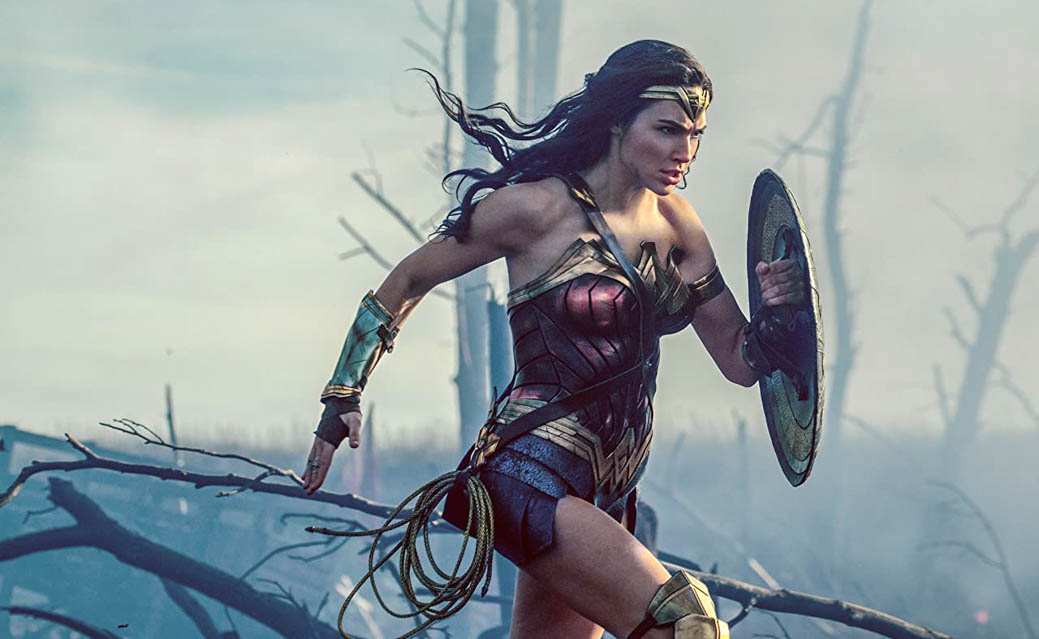The struggle with the Strong Female Character
The need for more accurate representations of women arises with the trope’s controversial setbacks.
“Look, I appreciate your spirit,” says Steve Trevor, a British Intelligence Agent played by Chris Pine in Patty Jenkins’s 2017 film Wonder Woman. “But this war is—a great big mess. And there’s not a whole lot you and I can do about that. I mean we can get back to London and try to get the men who can—”
“I am the man who can,” retorts Wonder Woman, played by Gal Gadot.
When Wonder Woman comics were first released in 1941, the character marked a dynamic shift in gender representation in mainstream media. Where media used to continuously portray women in situations where brave, handsome men would have to save them from castles, now there was a woman who was saving the day.
This character structure became known as the Strong Female Character.
The Strong Female Character is heroic, resolved, brazen, and has become an increasingly popular “correction” to previous female representational forms. She is often saving the day with feats of physical strength or outwitting her male counterparts. To some people, she is an inspiring reflection of female potential. To others, she is a reductive trope.
The character structure first emerged as a contrast to earlier feminine representations such as the Damsel in Distress, who simply exists as a reward for perhaps a brave archaeology professor with an affinity for precious cultural artifacts. As feminism sought more agency for women, another character structure emerged in mainstream cinema: the Femme Fatale, a sexy and devious woman who manipulates the men around her by wearing low-cut tops and appealing to their Achilles’ heel, sexual desire.
The Strong Female Character was thus an overdue change, one which reflected the broader socio-cultural movements that were flourishing beneath the superficiality of mainstream media. With more agency, women wanted appropriate representation. What arose was a woman who was not reduced to a trophy or a pair of legs, but a woman who was capable of just as much as any man, sometimes even more. It was a female character who inspired independence and was defined by one trait: strength.
The Strong Female lead, while not the most sophisticated or complex character, continues to be an inspiration for many young women. Despite its shortcomings, most people acknowledge that the character still stands as an improvement for female representation. However, this improvement does not protect it from criticism. Many critics have spoken out against the trope, proposing that it is a reductive and confining character structure that does not bring strength to femininity but rather replaces femininity with strength.
The primary critique is that by emphasizing her strength, she is often scrubbed of any imperfections, making for a one-dimensional character. She lacks flaws or weaknesses unless they are the clichéd sort one would share in a job interview. Consequently, her strength overshadows other valuable qualities of femininity.
The consequence of this is two-fold. First, when strength is attributed to these characters it is generally through a masculine modality of strength, meaning that these female characters still end up existing beneath a patriarchal structure because their characteristics are drawn from a male imagining of strength. As Brit Marling writes delicately in The New York Times, “What we really mean when we say we want strong female leads is: ‘Give me a man but in the body of a woman I still want to see naked.’”
Second, when strength becomes the character’s dominant feature—specifically when that image of strength is defined through someone’s ability to defeat adversaries or outwit peers—it overshadows more delicate dimensions of strength, such as kindness in the face of cruelty, or humility in the face of greatness. Kavita Ramdas, an advocate for gender equality, perhaps puts it best when she says, “We need women who are so strong they can be gentle, so educated they can be humble, so fierce they can be compassionate, so passionate they can be rational, and so disciplined they can be free.”
The Strong Female Character is generally condemned to express her power through physical or intellectual means, meaning that she has to be better than those around her to be of value which, while an inspiring characteristic, also makes for a character who is individually driven and tends to be emotionally isolated. This isolation in some ways undermines the collectivity of feminist movements by pitting the individual against the patriarchy instead of the collective facing it together.
While there are certainly some shortcomings with the Strong Female Character, it does mark an inspiring change in direction, and many films in the past decade have broken free from the structure to create complex female characters. For those of you interested in watching or rewatching movies that represent women in all their strength, check out the following films: Juno (2007), Lady Bird (2017), Marriage Story (2019), Three Billboards Outside Ebbing Missouri (2017), and Lost in Translation (2003).
Copy Editor (Volume 49) | aidan@themedium.ca —Aidan is completing a major in Professional Writing and Communications at the University of Toronto Mississauga. He previously worked as the Associate Editor for the Arts and Entertainment section of The Medium, and currently works as the Copy Editor for The Medium. When he’s not catching up on course work or thumbing through style guides, Aidan spends his free time exercising (begrudgingly), singing (unmelodically), and trying (helplessly) to read David Foster Wallace’s Infinite Jest. The latter of which has taken 3 years to reach the 16th page. You can connect with Aidan at aidan@themedium.ca.


